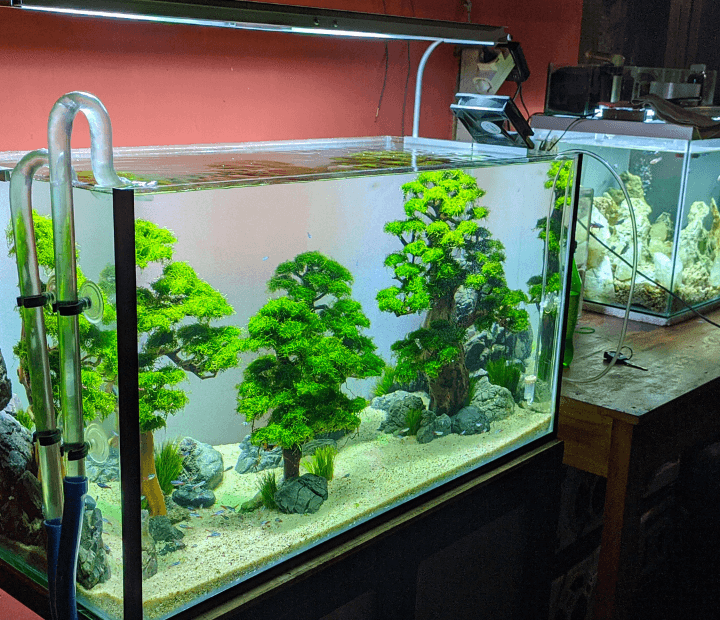Water quality is the cornerstone of a healthy aquarium ecosystem, influencing the well-being and vitality of aquatic inhabitants. As aquarium keepers, it’s essential to understand the key water parameters that affect the health and stability of your aquatic environment. Let’s delve into the fundamentals of water chemistry and explore the factors that contribute to optimal water quality in your aquarium.
- pH: pH is a measure of the acidity or alkalinity of water, with a pH of 7 considered neutral. Most freshwater aquarium fish thrive in slightly acidic to neutral water conditions, with a pH range of 6.5 to 7.5 being suitable for a wide variety of species. Certain fish species may have specific pH preferences, so it’s essential to research the ideal pH range for your chosen fish and adjust aquarium parameters accordingly.
- Temperature: Water temperature plays a critical role in the health and metabolism of aquarium fish, influencing their growth, reproduction, and overall well-being. Most tropical fish species thrive in water temperatures ranging from 75 to 82 degrees Fahrenheit (24 to 28 degrees Celsius). Invest in a reliable aquarium heater and thermometer to maintain stable water temperature within the optimal range for your fish species.
- Ammonia: Ammonia is a toxic compound produced by fish waste, uneaten food, and decaying organic matter in the aquarium. Even trace amounts of ammonia can be harmful to fish, causing stress, illness, and even death if left unchecked. Monitor ammonia levels regularly using a reliable test kit and perform water changes as needed to dilute and remove accumulated ammonia from the aquarium.
- Nitrite: Nitrite is produced during the biological filtration process as beneficial bacteria break down ammonia into less toxic compounds. While nitrite is less toxic than ammonia, elevated nitrite levels can still pose a threat to fish health, causing respiratory distress and inhibiting oxygen transport in the blood. Monitor nitrite levels closely, especially during the initial cycling phase of a new aquarium, and take steps to reduce nitrite accumulation through water changes and biological filtration.
- Nitrate: Nitrate is the final product of the nitrogen cycle and is less toxic to fish than ammonia and nitrite. However, high nitrate levels can still have adverse effects on fish health, leading to reduced growth, weakened immune systems, and increased susceptibility to disease. Keep nitrate levels below 20 ppm (parts per million) through regular water changes, efficient filtration, and careful feeding practices to maintain optimal water quality in your aquarium.
- Dissolved Oxygen: Dissolved oxygen is essential for the respiration and metabolic processes of aquarium fish and other aquatic organisms. Adequate oxygenation is crucial, especially in densely stocked aquariums or those with high biological activity. Ensure sufficient surface agitation and aeration to promote gas exchange and maintain dissolved oxygen levels within the optimal range for your fish species.
- Conductivity and Hardness: Conductivity and hardness refer to the concentration of dissolved minerals and salts in aquarium water, influencing its conductivity and buffering capacity. While some fish species prefer soft, acidic water with low mineral content, others thrive in hard, alkaline water conditions. Research the natural habitat and preferences of your chosen fish species to determine the appropriate conductivity and hardness levels for your aquarium.
By understanding and monitoring these key water parameters, aquarium keepers can create and maintain a healthy and stable aquatic environment for their fish and other aquatic inhabitants. Regular testing, diligent observation, and proactive maintenance are essential for ensuring optimal water quality and the well-being of your aquarium ecosystem.
